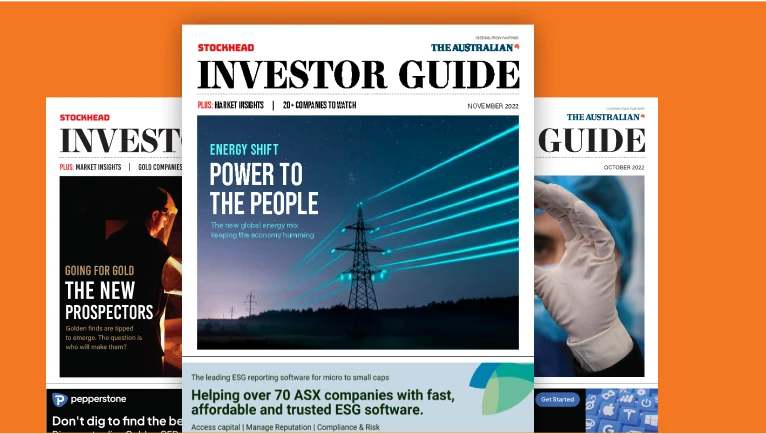Assistive tech targets market growth while improving lives

Music to the ears – ASX assistive tech stocks are transforming lives. Pic via Getty Images
- Demand for assistive technologies on the rise with growing global ageing population and awareness of disability inclusion
- Cochlear one of most high-profile ASX assistive technologies companies with legacy spanning more than 40 years
- Control Bionics helping thousands around the world communicate and connect in ways once thought impossible
With a rising global ageing population and awareness of disability inclusion growing, demand is increasing for technologies that help people maintain independence and improve quality of life.
Assistive technologies go beyond medical diagnostics or treatment by directly enabling individuals to hear, see, communicate and perform daily activities they might otherwise struggle to do.
And while assistive technology delivers clear social benefits and aligns with ESG goals, it’s also targeting a rapidly expanding market. Globally the assistive tech market was valued at ~US$22.9 billion in 2023 and is projected to reach US%36.6 bn by 2033, reflecting a compound annual growth rate (CAGR) of 4.8% throughout the decade.
In Australia, the assistive technology sector is projected to expand from ~US$720 million in 2023 to more than US$1.7bn by 2030, driven by demographic shifts such as an ageing population and rising prevalence of long-term disabilities.
Australia’s substantial healthcare expenditure is also considered a pivotal driver for demand in the Australian disabled and elderly assistive device market.
Global pioneer in hearing implant technology
From restoring communication for those with severe disabilities to preserving vision and enhancing hearing, Australian companies have a proud history in assistive technologies with ASX blue-chip Cochlear (ASX:COH) one of the most high profile.
Cochlear stands as one of the world’s foremost innovators in assistive hearing technology with a legacy spanning more than 40 years. Cochlear implants and bone conduction devices are life-changing products, which have enabled hundreds of thousands of people globally across all ages to hear and communicate more effectively.
Cochlear CEO and president Dig Howitt told Stockhead the organisation continued to progress new technology and care models, having recently launched the Cochlear Nucleus Nexa System, the world’s first and only smart implant system.
“The Nucleus Nexa Implant is the outcome of a 20 year investment in R&D and is the first cochlear implant to run its own firmware,” he said.
Howitt said similar to smartphones, the implant firmware could be updated to enable new features and access future innovations.
“Recipients will now have access to a better hearing experience with both implant and sound processor updates,” he said.
“The Nucleus Nexa System builds upon Cochlear’s industry-leading portfolio of electrodes, which are designed to optimise the electrode-neural interface and protect cochlea health and opens the door to even greater hearing potential for patients into the future.”
Enhancing sound in real-world situations
While Cochlear may dominate the implantable hearing device market Brisbane-based Audeara (ASX:AUA) is carving out its own space in personalised listening solutions that sit between consumer audio products and clinical hearing aids.
The flagship Audeara headphones and TV bundles the company started with use built-in hearing checks to create tailored sound profiles, ensuring clearer, enhanced listening experiences.
Audeara managing director James Fielding told Stockhead the features made the devices valuable for those with mild to moderate hearing loss, or for people using cochlear implants and hearing aids who got an incredible entertainment experience when the sound was tailored to their needs.
Building its portfolio Audeara launched Buds into its clinic networks this year. Unlike conventional hearing aids, Buds focus on enhancing the sound in real world situations like a busy cafe while also staying true to their entertainment focus, enhancing calls, TV and music.
“We believe assistive technology should enhance the human experience without compromise,” Fielding said.
“At Audeara, our personalised hearing solutions empower people to connect more deeply with music, conversations and entertainment, regardless of their hearing ability.”
The technology also supports accessibility through government funding programs including NDIS, DVA and the Hearing Services Program, broadening its reach and affordability.
With distribution in 1,500 clinics across Australia and more than 3,000 globally, including partnerships with major networks like Specsavers and Amplifon, Audeara is well positioned to capture growth in a market that’s both socially impactful and commercially attractive.
“The future of assistive technology is about inclusion, not limitation,” Fielding said.
“Audeara’s mission is to ensure that hearing health solutions are seamlessly integrated into everyday life, combining clinical credibility with consumer-level accessibility.”
‘Giving communication back for more than two decades’
Control Bionics (ASX:CBL) CEO Jeremy Steele describes the assistive technology medical device company as “sitting at the intersection of neuroscience and accessibility”.
“For more than 20 years, Control Bionics has been at the forefront of assistive technology innovation, helping thousands of people around the world communicate and connect in ways once thought impossible,” Steele told Stockhead.
Control Bionics has developed the NeuroNode – a wearable, watch-like, wireless non-invasive electromyography (EMG) and spatial sensor device to assist cognitive people with physical disabilities perform everyday functions.
He said NeuroNode was globally unique as the only augmentative and alternative communication (AAC) technology of its kind that combined movement and EMG signals into a single platform.
“Recognition by the US Centers for Medicare & Medicaid Services, awarding NeuroNode the first HCPCS code for an AAC device in 13 years, validates both the technology and the profound impact it delivers,” he said.
“We’re proud to be a pioneer in the fast-emerging neurotechnology space, empowering people living with conditions like ALS, cerebral palsy and spinal cord injury to reclaim their voice and their independence.”
Steele said the company’s objective was simple but ambitious – to expand global access to the most advanced, intuitive and life-changing assistive technologies available today.
“The NeuroNode isn’t just a device, it’s a lifeline to communication, control and connection,” he said.
“We believe that every person – regardless of physical ability — deserves a way to engage with the world.
“Our team’s work over two decades reflects a deep commitment to designing technologies that break through barriers and restore possibility.”
At Stockhead, we tell it like it is. While Audeara and Control Bionics are Stockhead clients, they did not sponsor this article.

UNLOCK INSIGHTS
Discover the untold stories of emerging ASX stocks.
Daily news and expert analysis, it's free to subscribe.
By proceeding, you confirm you understand that we handle personal information in accordance with our Privacy Policy.








